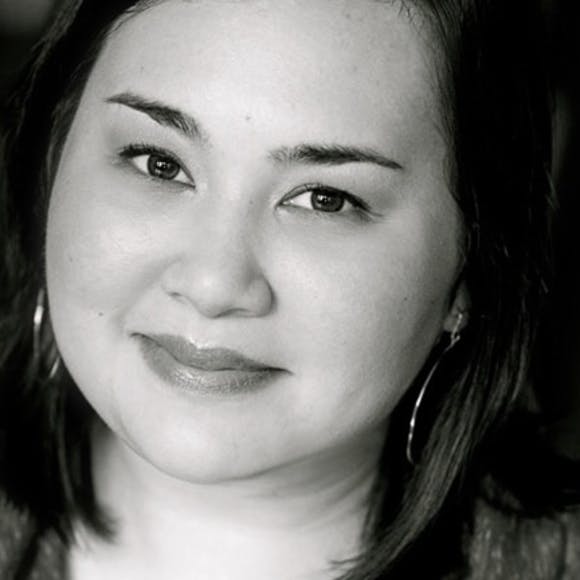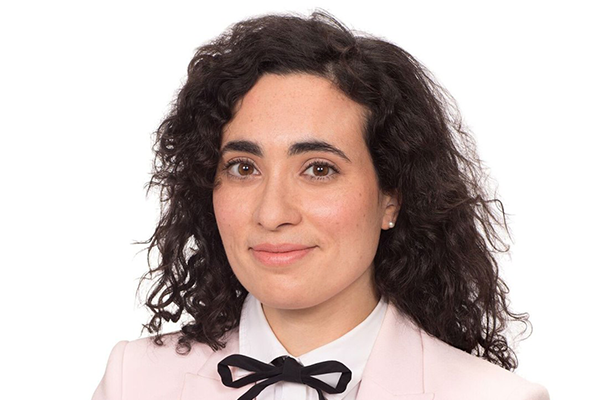Book: Games of Deception

Author: Andrew Maraniss
Author Bio:
Andrew Maraniss is a New York Times-bestselling author of narrative nonfiction. His first book, STRONG INSIDE, was the recipient of the 2015 Lillian Smith Book Award and the lone Special Recognition honor at the 2015 RFK Book Awards. The Young Reader edition was named one of the Top 10 Biographies and Top 10 Sports Books of 2017 by the American Library Association and was selected as a Notable Social Studies Book for 2019 by the National Council for the Social Studies.
His second book, GAMES OF DECEPTION, is the story of the first U.S. Olympic basketball team, which competed at the 1936 Summer Games in Nazi Germany.
Andrew is a Visiting Author at Vanderbilt University Athletics and a contributor to ESPN’s TheUndefeated.com. He has appeared on several national media programs, including NPR’s All Things Considered and Only A Game, NBC’s Meet The Press, MSNBC’s Morning Joe, ESPN’s Keith Olbermann Show, ESPN Radio’s The Sporting Life, and the SEC Network’s Paul Finebaum Show.
The son of Pulitzer Prize-winning journalist and best-selling author David Maraniss and trailblazing environmentalist Linda Maraniss, Andrew was born in Madison, Wis., grew up in Washington, D.C. and Austin, Texas and now lives in Brentwood, Tenn., with his wife Alison, and their two young children.
1. The 1936 Olympic Games is one of the most memorable events in the history of sports. What was it about the Games that made it something you desired to write about?
The idea for this book came about when I was visiting the University of Kansas to speak about my last book, STRONG INSIDE, which is a biography of Perry Wallace, the first African American basketball player in the Southeastern Conference.
While I was in Lawrence, I wanted to visit Allen Fieldhouse, the legendary home of the Jayhawks’ basketball team. I took a tour, and they have James Naismith’s original rules of basketball. Next to the rules, there was a photo of Naismith standing with some Japanese basketball players in the 1930s.
The man showing me around mentioned that Naismith was able to see his invention make its Olympic debut. I asked which Olympics that was, and when he said it was the 1936 Olympics in Nazi Germany, I knew that this could be my next book. The chance to write about the origins of such a popular sport, in the context of the rise of fascism and the Nazi Games, makes a compelling subject.
2. Why should young readers care about the 1936 Olympic Games and what is something about the Games that you hope doesn’t get lost in the annals of history?
This book uses the tableau of the Olympics to tell a story about propaganda, lies, racism and the need to speak out against injustice. Those are the lessons I hope readers will take away from this book. The basketball part of the story is fascinating, but the lessons for our own time are what are most important.
3. The US Olympic team attempted to boycott the ’36 Games. Why did their effort to not attend fail?
It wasn’t the US Olympic team that attempted to boycott the 1936 Olympics, but rather a boycott movement initiated by US citizens to have the US entirely boycott an Olympics being held in Hitler’s Germany. Leaders of the boycott movement said it was incomprehensible that an event supposedly all about sportsmanship, fair play, and international goodwill could be contested in Nazi Germany.
A Gallup Poll taken two years before the Olympics showed that 43 percent of the American public favored a boycott. The other side, however, was led by the American Olympic Committee president Avery Brundage, who favored participation. Brundage was an anti-Semite and Nazi admirer who worked with Nazi officials to influence public opinion in the United States against the boycott movement.
He portrayed boycott supporters as un-American. He also had a personal financial motivation to ensure the US participated in the Nazi Games – his company was contracted to build a new German embassy in Washington, DC. In the end, Brundage was successful in lobbying American athletic officials to vote in favor of participation.
4. ‘Games of Deception’ is a very powerful book title; where does the title come from and what made you choose it for this book?
Thank you! It refers to both the Olympic “Games,” the “Game” of basketball, and the “games” the Nazis were playing with the truth at that moment in history. These Olympics were a propaganda tool of the Nazis to attempt to fool the international community into believing everything was fine there and to distract from the terrible things happening behind the scenes.
5. In your opinion, what makes sports such a great microcosm of life?
Sports stories nearly always involve elements of struggle, doubt, determination, success, and overcoming challenges, so those elements make for good stories and reveal much about human nature. I’m not interested in writing sports-related books just for the purely athletic aspects, however.
Sports provide an accessible avenue to explore issues related to racial and gender equality, American and international politics, and so many other social forces. That’s why I love using sports to tell these larger stories. The first challenge, especially in writing for younger audiences, is simply to get someone to pick up a book and keep turning the page. I choose to do that through sports themes, which appeal to a broad range of people. From there, the story can go anywhere.
6. The Gold Medal team of the 1936 Games was one of the last all-white Basketball teams the USA ever sent to the Olympics. How do you think that helped the introduction of the sport to the Games and do you believe it was intentional?
Absolutely it was intentional, and it’s shameful. Black teams were not allowed to compete in the Olympic qualifying tournament. One of the chapters in my book is called Mirror, Mirror, and it shows how racism in the United States and in Germany in 1936 were virtually indistinguishable from each other. The Nazis had sent attorneys to the United States to study our race laws. They admired American racism.
7. Do you think Jesse Owens’ heroics at the 1936 Olympics also helped the sport of basketball gain more attention seeing as people were interested in hearing about him?
That’s an interesting question, but I don’t think that’s the case. Basketball received very little attention at those Olympics. I would agree that the fact basketball made its international debut at the 1936 Olympics helped the sport continue to grow internationally.
More countries entered teams in the basketball competition in those Olympics than any other sport and no doubt that gave a boost to basketball in many countries. One American, Frank Lubin, was invited to stay in Europe after the Olympics and help develop the game in his parents’ homeland of Lithuania.
What I find remarkable is that even as controversial as those Olympics were, and the number of books and movies that have been made about the 1936 Olympics, that still most people don’t know this is where Olympic basketball got its start.
8. The Gold Medal game was played outside in a rainstorm on a sand and clay court with the US ultimately prevailing, 19-8, over the high-powered Canadian team. Why was the game played outdoors and were these games a focal reason for the sport now being played inside on hardwood floors?
Basketball was not a popular sport in Germany at the time of the 1936 Olympics. Olympic organizers converted some clay tennis courts into the basketball courts for the Olympic tournament, claiming that playing the games “under the open-air” would be a good thing for spectators and players alike.
Things worked out OK in the first few rounds, but then the rainstorm completely ruined the gold medal and bronze medal games. If players tried to dribble the ball would just plop in the mud and stay there. The ball became waterlogged and heavy. The medal games were a joke.
As much as these games were ruined by the rain, I would not say they were the reason why games are now played indoors on hardwood. Almost all games were already played indoors even at that time.
Madison Square Garden had already achieved status as the mecca of basketball in the U.S., and basketball courts existed all over the world. It was just a strange anomaly that the Germans chose to put basketball outside during the Olympics.
9. The sport of basketball is now almost 130 years old. What do you think Dr. James Naismith would think of the game today as it is currently played?
I think he would be happy that the game is so popular all around the world. He said that he always considered basketball an international game since he was Canadian and he invented it in the United States at the YMCA International Training School. Students from all over the world played in the very first basketball game, and a student from Japan drew a sketch of that first game.
One aspect of the game that changed in his lifetime that he did not like was the move away from a jump ball after every made basket. The change of possession after a made basket seems like such a normal and natural part of the game to us now, but in his original rules, there would be a center jump after every basket.
He said that in sports, it is moments of uncertainty that create the most drama. And he felt that the uncertainty of which team would gain possession during each jump ball was an exciting element of the sport he invented.
10. Currently, who is your favorite NBA team and who do you think will win the championship in June 2020?
My favorite NBA team is the Milwaukee Bucks! I’m originally from Wisconsin, and my first favorite players were guys like Sidney Moncrief and Marques Johnson. I’m hopeful that with Giannis Antetokounmpo and some other good players, they will have a shot at the title this year.
11. What’s your best advice for getting over writer’s block?
My dad gave me some great advice that works well when you’re working on a project that doesn’t have a tight deadline. If you are writing a chapter or a scene, and you have a good idea of how it will flow, stop writing for the day or for a particular writing session before you get to the end of the story you’re telling.
That way, when you pick up the next time, you already know where the story is headed, and you immediately start out with momentum. That’s as opposed to writing until you get to the end of a particular story and then starting out the next time with no momentum having to figure out where to go next. That approach has helped me a lot.
12. Do you plan on writing any more books in the future?
Yes, I am now writing a biography of Glenn Burke, the first openly gay Major League baseball player. I have until February to finish writing it, and it will come out in the spring of 2021. I hope to continue writing sports-related narrative non-fiction with social justice messages as long as I can!
Places to Find More From This Author:
Twitter: @trublu24
Facebook: Andrew Maraniss
Website: www.andrewmaraniss.com
Get Your Copy of Games of Deception Today!













